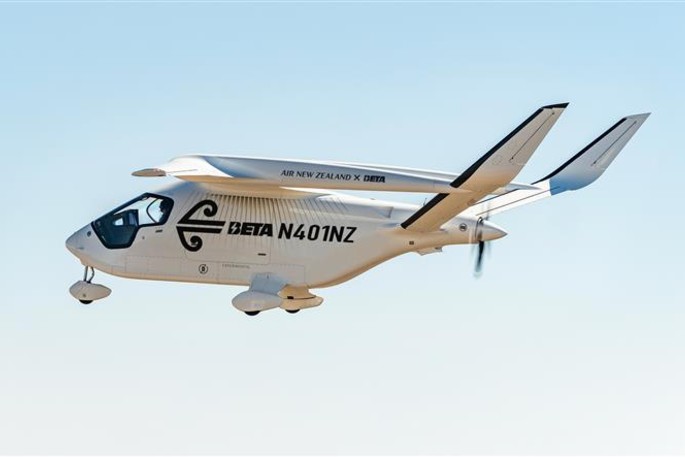This Content Is Only For Subscribers
Air New Zealand and US-based BETA Technologies have officially launched the airline’s Next Generation Aircraft technical demonstrator programme, marking a major milestone for electric aviation innovation in New Zealand.
The BETA ALIA CX300, the first electric aircraft to carry the Air New Zealand name, will complete a series of demonstration flights around the country over the next four months.
Based initially in Hamilton, the aircraft will undergo an intensive proving programme before travelling south to Wellington via Taupō, Napier and Palmerston North. From there, it will prepare for Cook Strait crossings to Blenheim by the end of January.
The programme follows extensive preparation between Air New Zealand, BETA Technologies, the Civil Aviation Authority and airport partners to ensure the aircraft can operate safely in New Zealand conditions.
Air New Zealand chief executive Nikhil Ravishankar says the programme is a key step in the airline’s long-term innovation and fleet strategy.
“Sixty per cent of regional flights in New Zealand are less than 350 kilometres, and around 85 per cent of our electricity is renewable – the perfect laboratory for next generation aircraft,” Nikhil says.
“While new propulsion technologies are still developing, BETA is leading the way and we’re witnessing a true technology step-change.
“New Zealand is a country with a pioneering spirit and has always been a fantastic place to try new things. In bringing the ALIA CX300 to New Zealand, we’ve experienced true collaboration – a world-leading innovator in BETA Technologies working alongside Kiwi engineers, pilots, regulators and airports, all focused on how this emerging technology can be safely and practically integrated into our airspace when it’s ready.”
BETA Technologies head of global sales Simon Newitt says operating in New Zealand provides invaluable insights for the aircraft’s global rollout.
“Launching this programme is an exciting moment for BETA, as it marks the early stages of operations with Air New Zealand,” Simon says. “Our aircraft are designed for all types of missions, and this programme represents the next step in validating and preparing our technology for real-world environments.”
“This collaboration between airline, regulator and infrastructure partners shows how aviation can continue to innovate while safely introducing lower-emission, lower-cost, next-generation aircraft into service.”
Hamilton Airport chief executive Mark Morgan says the airport is proud to host the first phase of test flights.
“The Hamilton airspace is a great place to understand the systems, infrastructure and logistics that will one day support next-generation aircraft across the country,” Mark says. “We’re excited to be part of that learning for the future.”
Civil Aviation Authority director and chief executive Kane Patena says the demonstrator programme will help inform how emerging aircraft systems can be safely integrated into New Zealand’s aviation network.
“Emerging aviation technologies don’t always fit into existing rules, so it’s our job to help operators safely bring these technologies into New Zealand’s unique aviation system,” Kane says.



